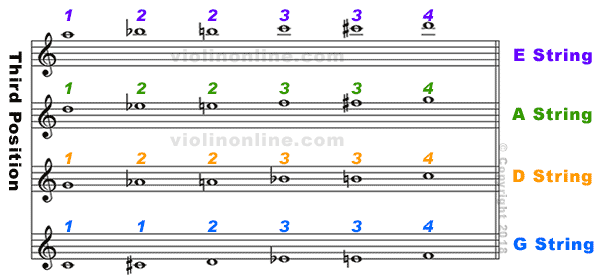

Dorian : Take the natural minor and raise the 6th a half step.Half steps: 2-3 and 5-6 C D-Eb F G-Ab Bb C On the white keys: A to A. Aeolian: The same as the natural minor scale.Musical Example: Debussy ‘s ‘The Sunken Cathedral’. C D E-F G A-Bb C On the white keys: G to G. Mixolydian : Take any major scale and lower the 7th note a half step.Song Example of this musical mode: Mazurka No. C D E F#-G A B-C On the white keys: F to F. Take any major scale and raise the 4th note a half step to make the Lydian mode. Lydian is the brightest sounding mode.Hoffman teaches could be an example–in fact, Five Woodpeckers uses the first 5 notes of the major scale! Example of this music mode: any song in a major scale that Mr. Ionian : This one should sound familiar because it has exactly the same music scale notes as the Major scale! Half steps: between pitches 3-4 and 7-8 C D E-F G A B-C On the white keys: C to C.We’ve even included listening pieces for each musical mode from different styles, so you can begin to identify musical scales and modes by ear! The “major” modes of a scale We’ll include where to find each music mode using only white keys as well. Let’s check these out on the piano, using the C Major and Minor music scale notes as our base. This means that music written in some modes sounds different than music written in a scale. The other musical modes share some similarities to major and minor scales, but show differences in the patterns of half and whole steps. Today, the major and minor musical scales correspond to the musical modes of Ionian and Aeolian. By changing the starting note, we change the note that is the central focus of the melody, which changes the sound. While today many music students focus on major and minor scales built on different notes to evoke emotions, the Ancient Greeks took the notes that today form the white keys of the piano and shifted the starting note to form each new mode.

Each of the seven music modes has its own unique sound.

These specific modes in music had seven pitches each and consisted of five whole steps and two half steps. When musicians talk about modes, they’re usually referring to the seven Greek modes, which is what the ancient Greeks called scales. Try Premium for maximum learning potential. Our online piano lessons are affordable and effective. Changing the order of half and whole steps changes the sound, or color of the scale! There are nearly countless different types of music scales! In Western pop and classical music, scales are organized by the intervals, or the order of half and whole steps in the scale. Music scales can consist of as many as twelve pitches such as the chromatic scale (made entirely of half steps), or they can have as few as five pitches such as a Major Pentatonic scale (Do-Re-Mi-So-La, or simply play the black keys). For example, the C major scale is CDEFGAB, then back to C. Music scales are often represented by playing or displaying the notes one by one in ascending order. A scale is a collection or group of notes used to improvise or to write a musical composition. The words “mode” and “scale” can be confusing because they are sometimes used interchangeably to describe the same thing.

Fun fact: the word “mode” comes from the Latin word for method, so modes in music are simply another type of method or musical formula for picking which notes to play in a melody! In a way, musical modes are like the older cousins of today’s major and minor scales. Today’s major and minor scales in Western music are derived from modes, just like the English language borrows prefixes and suffixes from Greek and Latin. Alex is back this week to tell us about modes in music! The modes we are talking about today originated long ago in Ancient Greece. Most piano students learn about the major and minor scales, but did you know there are other kinds of scales too? Mr. Curious about musical modes and scales in music? In this article you will learn about music scale notes and modes in music


 0 kommentar(er)
0 kommentar(er)
